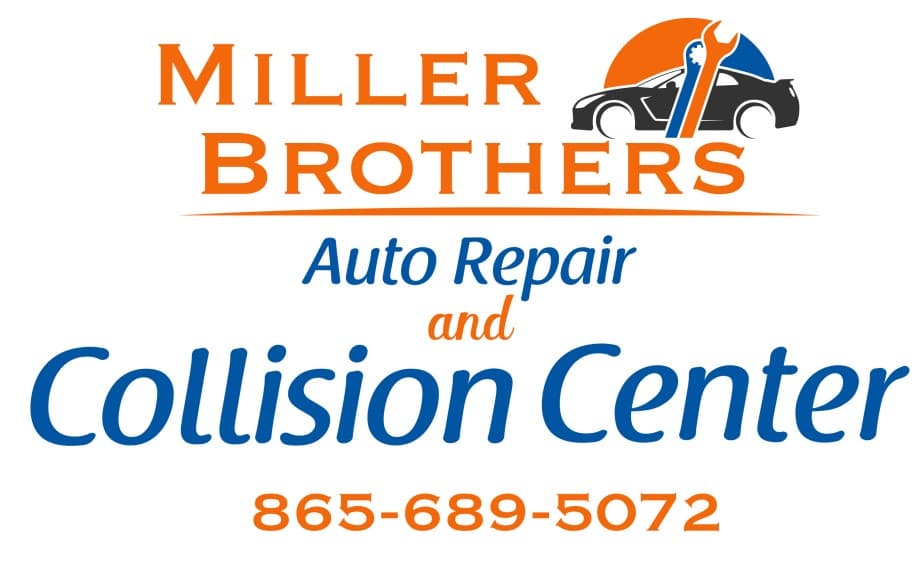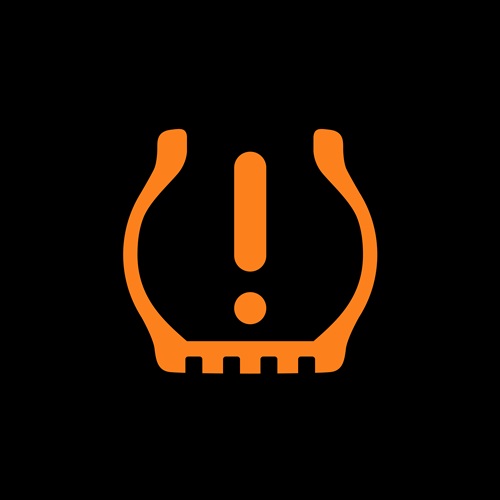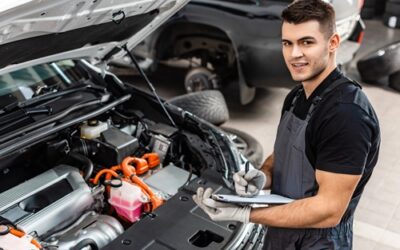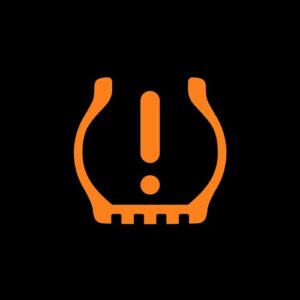
Auto Maintenance in Knoxville TN
When driving, you may notice various lights and indicators on your dashboard, but one that often raises concern is the Tire Pressure Monitoring System (TPMS) light. This light serves a crucial role, as it alerts you when your tire pressure is too low or too high, potentially creating unsafe driving conditions. So, what should you do when the TPMS light illuminates? Understanding its purpose and how to respond can help ensure your safety on the road. Here are some auto maintenance tips you need to know.
Auto Maintenance: The Importance of Proper Tire Pressure
To start with, maintaining the correct tire pressure is essential for both safety and efficiency. Low tire pressure can lead to sluggish handling, reduced fuel economy, and increased heat buildup, all of which can result in tire failure.
On the other hand, overinflated tires may cause decreased traction, uneven wear, and a rougher ride, since they absorb less road impact. Because of these factors, it’s vital to keep your tires properly inflated to avoid premature wear and potential tire issues.
What Does the TPMS Warning Light Mean?
When the TPMS light comes on, it usually means that one or more of your tires are not at the correct pressure level. Typically, the TPMS light looks like a horseshoe with an exclamation point in the center, making it easily recognizable. But what steps should you take when this light appears?
1. Check Your Tire Pressure Manually
The first thing you should do is manually check the tire pressures with a gauge. For accurate results, ensure your tires are inflated to the manufacturer’s recommended levels, which you can find on the driver’s door jamb or in the vehicle’s owner’s manual. It’s important to note that this recommended pressure is different from the maximum pressure indicated on the tire’s sidewall.
Moreover, even though the TPMS is helpful, it doesn’t replace regular tire pressure checks. For example, your tire pressure could drop below the recommended level without triggering the TPMS light, so it’s wise to monitor your tires regularly.
Different Scenarios with the TPMS Light
The TPMS light doesn’t always behave the same way, and understanding these variations can help you take the appropriate action and perform any necessary auto maintenance in Knoxville TN.
TPMS Light Stays On While Driving
If the TPMS light comes on and stays illuminated, it indicates that at least one of your tires is underinflated. In this case, it’s best to stop as soon as possible, check the tire pressure with a gauge, and add air as needed. Addressing the issue promptly helps prevent further damage and ensures your vehicle remains safe to drive.
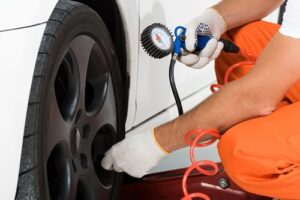
tire pressure in Knoxville TN
TPMS Light Turns On and Off
Sometimes, you might notice that the TPMS light turns on and off intermittently. This can happen when the tire pressure is close to the threshold that triggers the alert, especially if there are fluctuations in ambient temperature in Knoxville TN.
For instance, cooler temperatures at night might cause the tire pressure to drop, turning the light on. As the temperature rises during the day, the pressure may increase, causing the light to turn off. In such situations, it’s advisable to manually check the tire pressures and adjust them if necessary.
TPMS Light Flashes and Then Stays On
Another scenario is when the TPMS light flashes for about 60 to 90 seconds upon starting your car and then stays on. This usually indicates a malfunction in the TPMS itself. When this happens, it’s crucial to take your vehicle to an auto repair shop in Knoxville TN for inspection and repair. While the TPMS is not working correctly, it won’t be able to alert you to low tire pressure, so it’s essential to manually check your tires until the system is fixed.
Why Regular Tire Pressure Checks Are Still Necessary
Even though the TPMS is a useful tool, it’s not a substitute for regular tire pressure checks. Several factors can limit the effectiveness of the TPMS:
- The warning light might be set to activate at a pressure lower than what’s ideal for your vehicle’s load.
- The sensors could fail to transmit accurate data to the vehicle’s computer.
- The system may struggle to detect low pressure if multiple tires are losing air at the same rate.
Therefore, it’s recommended to check your tire pressure at least once a month, before long trips, and whenever you’re carrying extra load.
By understanding what your TPMS light is telling you, knowing how to respond, and working with Miller Brothers Transmission Auto Repair and Body Shop, you can maintain your vehicle’s safety and performance. Regular tire pressure checks, alongside the TPMS, can help you avoid potential issues and ensure a smoother, safer driving experience.
So, keep an eye on your tire pressure and stay safe on the road! Call Miller Brothers Transmission Auto Repair and Body Shop now if you need auto maintenance and repair services.
Like our Facebook page for more information about auto services.
Miller Brothers Auto Repair and Collision Center
7123 Tazewell Pike
Corryton, TN 37721
(865) 689-5072
https://www.millerbrosautorepair.com/
Serving Knoxville, TN and Knox County
Service areas include: All of Knox County, Corryton, Fountain City, Halls Crossroads, Powell and Knoxville
